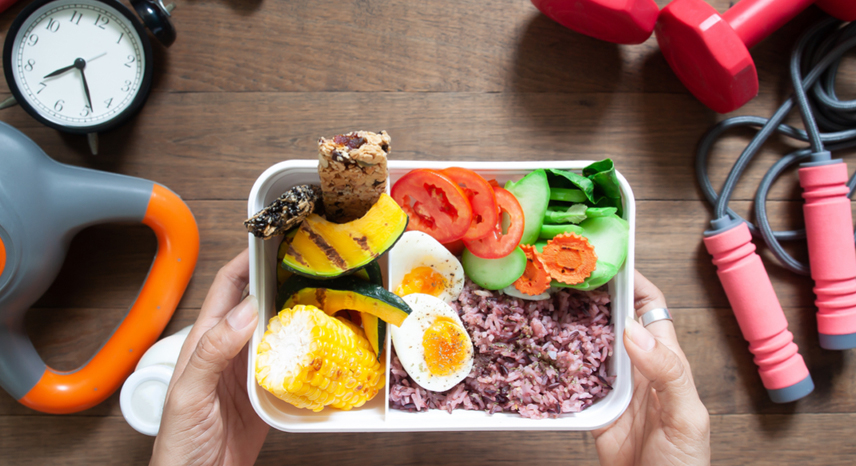HIIT vs Steady-State Cardio: Which Burns More Fat

When it comes to losing fat, cardio exercise plays a big role. However, with so many options available, it can be not very clear to know which one really works best. Two popular types of cardio workouts are High-Intensity Interval Training (HIIT) and steady-state cardio. HIIT involves short bursts of very hard exercise followed by quick rest periods, while steady-state cardio means keeping a steady, moderate pace for a longer time, like jogging, cycling, or walking briskly. People often wonder which of these two methods burns more fat. Pushing yourself hard in a short workout like HIIT gives faster results, especially for busy people. Others feel that staying active for longer, even at a slower pace, helps melt fat away more effectively. Both styles can help with weight loss, improve heart health, and lift your mood, but they work differently. In this blog, we will compare HIIT and steady-state cardio in a simple way to see which one helps burn more fat.
What is HIIT?
High-intensity interval Training (HIIT) is characterized by alternating short periods of vigorous exercise with intervals of rest or lower-intensity activity. A typical HIIT session might involve 30 seconds of maximal sprinting followed by 60 seconds of walking, repeated for 15-20 minutes. These workouts engage a broad range of exercises, including running, cycling, or bodyweight movements such as burpees, making HIIT versatile and adaptable.
The hallmark of HIIT is its intensity, with heart rates reaching 80-95% of an individual's maximum during high effort intervals. This intensity drives significant calorie expenditure in a condensed timeframe, typically 20-30 minutes, including warm-up and cool-down periods. HIIT's efficiency and ability to enhance cardiovascular fitness have contributed to its widespread adoption among fitness enthusiasts seeking effective fat-loss solutions.
What is Steady-State Cardio?
Steady-state cardio involves maintaining a consistent, moderate intensity over an extended duration, typically 30-60 minutes or more. Activities such as jogging, cycling, or swimming at a steady pace exemplify this method, with heart rates generally ranging from 50-70% of the maximum. This moderate intensity allows for sustained effort, making steady-state cardio accessible to a wide audience.
The simplicity of steady-state cardio is a key advantage, requiring minimal equipment and enabling participation in various settings, from outdoor trails to indoor treadmills. Its lower-impact nature reduces stress on joints, rendering it suitable for beginners, individuals with physical limitations, or those seeking a less demanding exercise regimen.
Mechanisms of Fat Loss
The mechanisms by which HIIT and steady-state cardio facilitate fat loss differ significantly, influencing their effectiveness and appeal.
HIIT Fat Loss Mechanisms
During HIIT, the body relies primarily on glycogen (stored carbohydrates) for energy due to the high intensity of the exercise. This intense effort results in substantial calorie burn during the session. However, HIIT’s most notable advantage is the Excess Post-exercise Oxygen Consumption (EPOC) effect, which elevates metabolism post-workout. This afterburn effect can lead to additional calorie expenditure for several hours, enhancing overall fat loss. Studies suggest HIIT is particularly effective at reducing abdominal fat, a type of visceral fat associated with health risks.
Steady-State Cardio Fat Loss Mechanisms
Steady-state cardio, operating at a lower intensity, utilizes a higher proportion of fat as fuel during exercise. This reliance on fat stores is due to the body’s efficiency in mobilizing fat for energy at moderate intensities. However, the total calorie burn during a steady-state session may be lower than HIIT for equivalent durations, and the afterburn effect is minimal. Consequently, steady-state cardio may require longer sessions to achieve comparable calorie deficits, impacting its time efficiency.
Pros and Cons of HIIT
Pros
1) Short and time-saving, ideal for busy schedules.
2) Burns a large number of calories in a short workout.
3) It creates an afterburn effect, so you keep burning fat after exercising.
4) Quickly improve heart health and overall fitness levels.
Cons
1) It can be very tiring and demanding on the body.
2) It is not recommended for beginners without proper guidance.
3) There is a higher risk of injury if exercises are done incorrectly.
4) It puts more stress on joints and muscles, which may cause discomfort or pain.
Pros and Cons of Steady-State Cardio
Pros
1) Easier for beginners to start and maintain.
2) Gentle on joints, reducing the chance of injury.
3) It helps build endurance and stamina over time.
4) It can be calming and reduce stress during exercise.
Cons
1) Requires more time to burn a similar amount of calories.
2) It may become boring due to its repetitive nature.
3) It produces less of the afterburn effect than HIIT.
4) Typically burns fewer calories per minute than high-intensity workouts.
Who Should Choose HIIT?
HIIT is well-suited for:
1) Individuals with limited time are seeking efficient workouts.
2) Intermediate to advanced exercisers comfortable with high-intensity efforts.
3) Those desiring variety and dynamic exercise routines.
4) Individuals aiming to enhance both aerobic and anaerobic fitness.
Who Should Choose Steady-State Cardio?
Steady-state cardio is preferable for:
1) Beginners or those resuming exercise after a hiatus.
2) Individuals with joint issues or health conditions limit high-intensity activity.
3) Those training for endurance events, such as marathons.
4) People who find moderate, sustained exercise more enjoyable.
To conclude, both HIIT and steady-state cardio are great for burning fat, but they do it in different ways. HIIT is fast and intense and keeps your body burning fat even after the workout ends. It is ideal for people with tight schedules who want quick results. However, it can be tough for beginners or those with joint problems. Steady-state cardio is more relaxed and easier to maintain for longer periods. It burns fat during the workout itself and is better for building endurance. While it may not give the same quick results as HIIT, it is a powerful tool for steady, long-term fat loss. In the end, the best choice depends on your goals, fitness level, and personal preference. You do not have to pick just one. Mixing both can give you the best of both worlds. What matters most is finding a routine that you enjoy and can stick to over time. That is the real secret to burning fat and staying healthy. Keep moving, stay positive, and choose what works best for your body and lifestyle.
post

Lifestyle ≠ 28 October
Fashion and Wellness: How What You Wear Can Affect Your Health

Lifestyle ≠ 28 October
Future of Fashion: Exploring the Role of AI and Virtual Reality in Style

Lifestyle ≠ 28 October
The Intersection of Fashion and Music: Style Influences from Iconic Artists

Lifestyle ≠ 28 October

Lifestyle ≠ 28 October
Previous Post
No Previous blog available.
Next Post
Fitness and Sports October 28
Fuel Your Workout: Best Pre- and Post-Workout Foods
